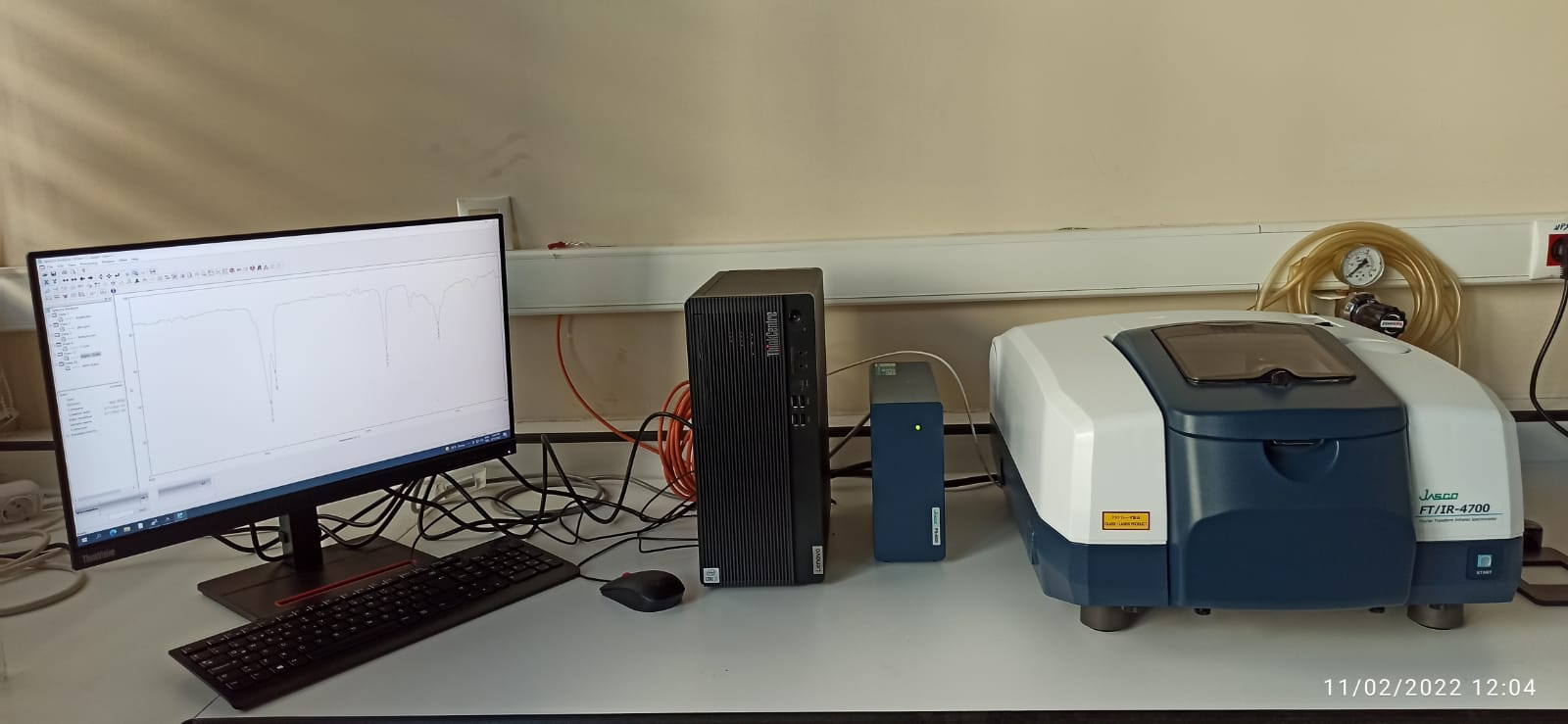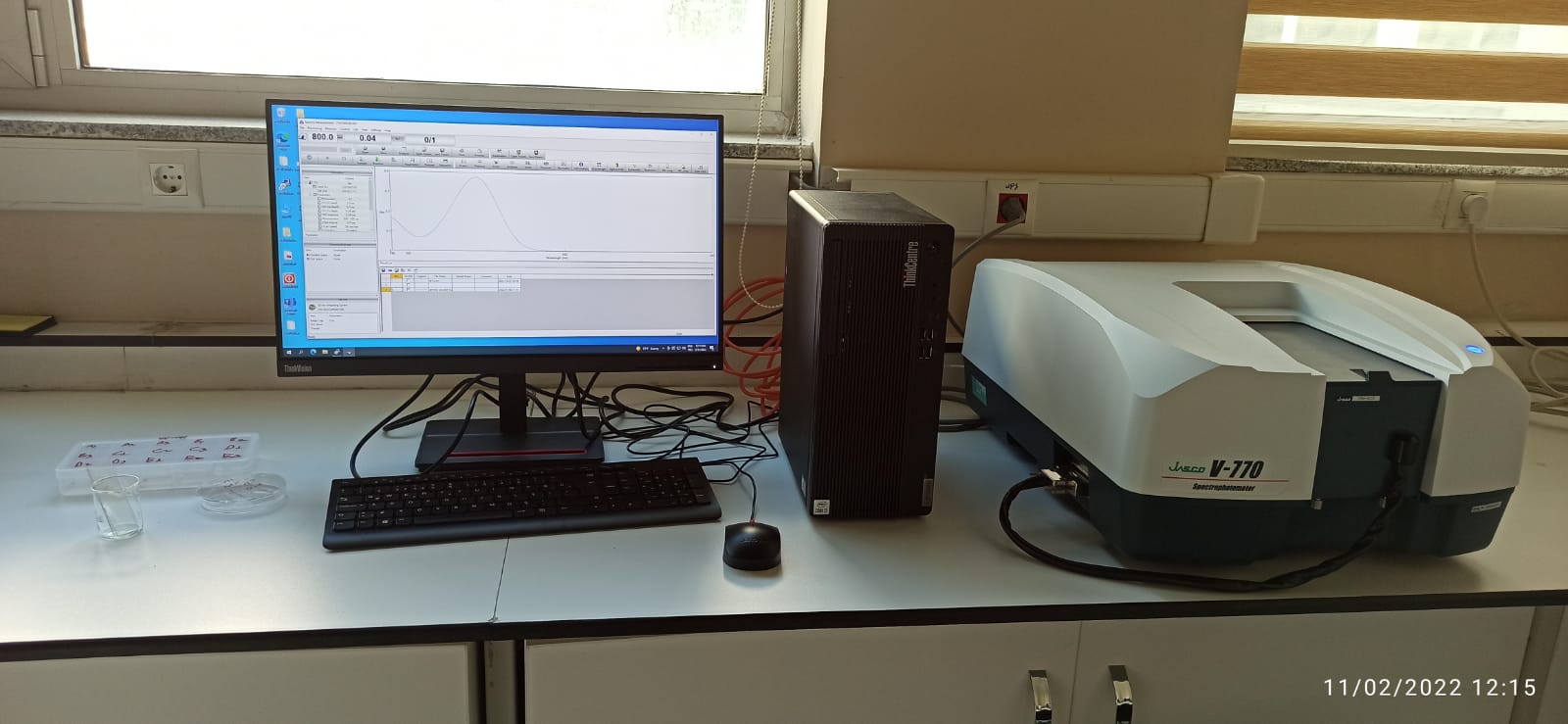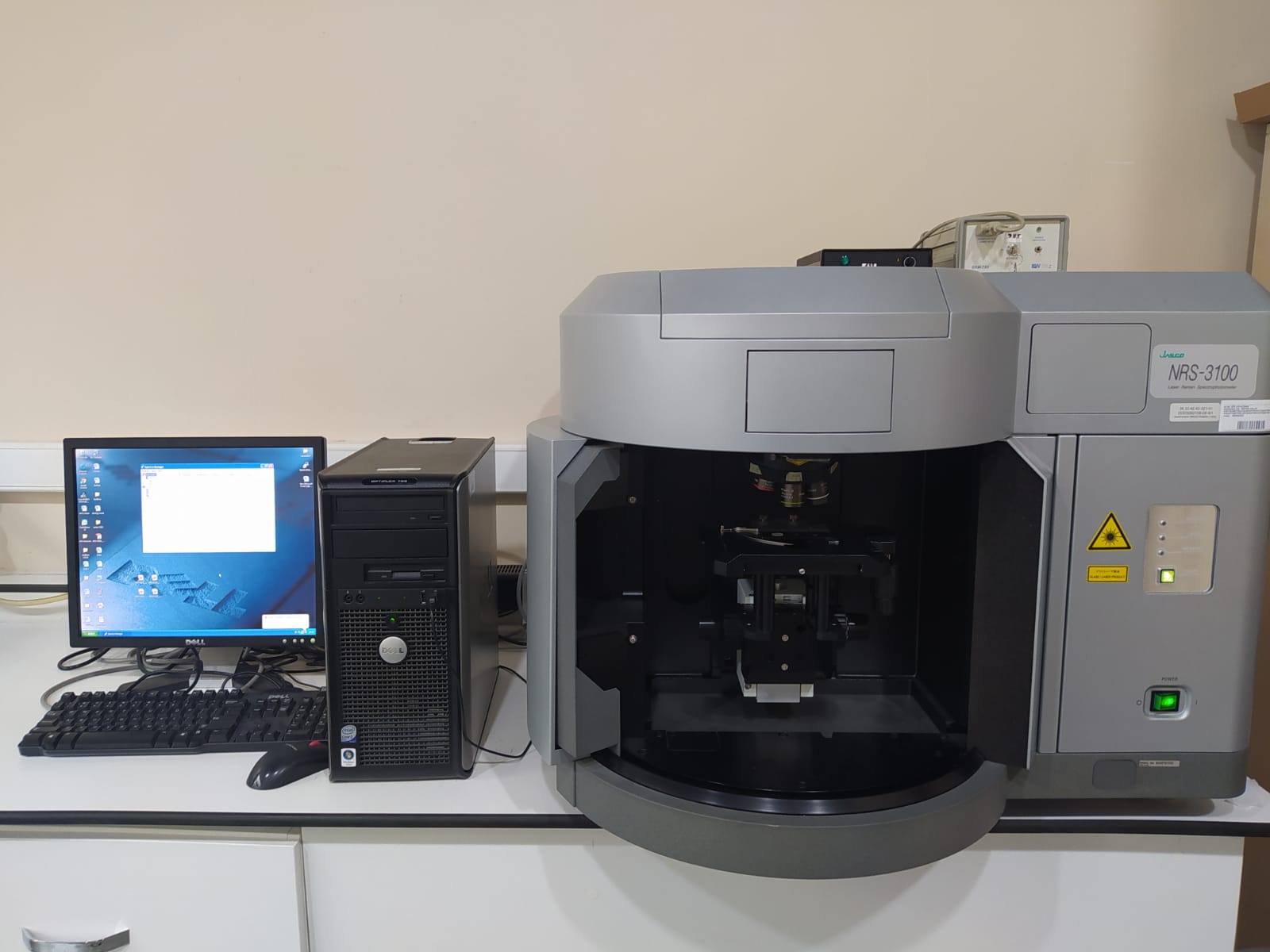Spectroscopy
FTIR Spectroscopy is a technique with a widerange of applications in academic and industrial areas. It is based on the absorption of infrared light by the substance under study. In this method, besides obtaining descriptive information about the chemical bonds in the structure of a molecule or compound, it is possible to analyze the structure and determine the functional subgroups of solid and liquid samples in organic or inorganic structure by using the IR active properties.
Withthe FTIR spectrophotometer in ourcenter, thespectrumagainst % transmittance or absorbance is recorded in themid-infrared region (7800 - 350 cm-1). Analysis of solid and liquid samples is done using diamond ATR (Attenuated total reflectance). The FT/IR 4700 device used in theanalysis has a resolution higher than 0.4 cm-1.

Ultraviolet ana visible light (UV-Vis) absorption spectroscopy is the measurement of the attenuation of a beam of light after it has passed through a sample or is reflected from a sample surface. UV-Vis spectroscopy generally includes measurement of molecules in solution or inorganic ionsand complexes, spectra of organic compounds in different solvents, determination of optical properties of thin films, interactions of nanomaterials with different wavelengths of light, determination of absorptionbands, determination of bandgap of semiconductor thin film sand calculation of absorption coefficients. Often used in analysis. In the double beam V-770 UV-Vis-NIR spectrometer device located in our center, measurements are taken against absorbance, % transmittance or reflectance in the wavelength range of 190 - 2700 nm.

Raman scattering provides important in formation about the chemical structure of molecules. The vibrational spectrum of a molecule can be thought of as that molecule's signature or "molecular finger print" feature. Raman spectroscopy relies on measuring the scattered beam from a specific angle by irradiating a sample with a powerful laser source consisting of visible or near-infrared monochromatic beam. During Raman scattering, an excess or less energy occurs in the energy of the scattered light compared to that of the light interacting with the molecule. This excessor scarcity is as much as the energy differences between the vibrational energy levels of the molecule interacting with the light. For this reason, information about vibration energy levels of molecules can be obtained by spectroscopic examination of Raman scattering, ana this spectroscopic method is called Raman spectroscopy. Differences in the wavelength of the scattered light according to the wavelength of the light interacting with the molecule is called Raman shift.

Uses of Raman Spectroscopy
1) Academic and industrial research,
2) Food and beverage areas,
3) Microbiology, drug development and
sciences related to life, such as bacteriology,
4) Microanalysis,
5) Nuclear power industry
6) Paper industry,
7) Polymers,
8) Analytical processing technologies,
9) Process control,
10) Recycling industry,
11) Surface Science,
12) Materials Science,
13) Geology,
14) Biology,
15) Chemistry,
16) Medicine,
17) Narcotic